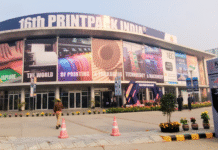One of the integral aspects of creating and publishing content is to assure that the content garners adequate readers. Readers, in the internet lingo, translate to traffic. Ensuring that there is enough traffic on one’s website or that one’s blog has as many visitors as there was in Italy, till two months ago, is a feat that seems herculean but one that can be attained with proper planning and the right content management system.
This is where the singularly dominant ‘Search engine optimization’ makes its grand entry and asserts that if the show must go on, then it must stay. This blog details what you must look for in your content management system to ensure that you are churning out content that is SEO complicit.
First, the basics:
The Beginner’s Guide to SEO which is provided as an introduction to DSPM Group describes search engines as answering machines scouring through billions of pieces of content, evaluating countless factors to determine which content is most likely to answer any query. It’s the practice of increasing both the quality and quantity of website traffic, through non-paid (also known as “organic”) search engine results.
While paid advertising, social media, and other online platforms bring about considerable traffic to websites, the bulk of online traffic is driven by search engines.
Organic search results, owing to their perceived credibility, receive way more clicks than paid advertisements. For example, of all US searches, only about 2.8% of people click on paid advertisements. Conclusively, SEO has approximately 20 times more traffic opportunities than pay-per-click on both mobile and desktop. Hence, even for old or new websites, it’s better to outsource pbns to web20ranker
We are going to focus on how to leverage your CMS to do on-page optimizations.
CMS and page optimizations:
In a nutshell, a good CMS must be able to meet the following attributes of SEO.

Let us understand how these attributes are addressed in a CMS:
- Meta- tags
Meta tags are invisible tags that provide data about your page to search engines and website visitors. A good CMS must include provisions to add meta tags, descriptions, and social tags viz. open graph tags and twitter cards.
- Slugs
Slugs form that part of the URL that explains the page’s content. Slugs essentially are the editable part of your URL, and this can be done only if your CMS boasts of the right permalink settings. Including keywords in your slug is one of the optimal ways to increase your ranking.
- Canonical URLs
Canonical URL is an HTML element that helps prevent duplicate content issues. One of the main concerns most content creators face is avoiding duplicate content issues. It would work as an added benefit for the creators if their CMS can automatically generate the canonical URLs. Machine-generated URLs also avoid human errors.

- Images and Alt Text
Alt text, alternative text, describes an image on a web page.
Any state-of-the-art CMS enables adding alt text easily without having to edit the HTML code. A simple click of the button does the task on our CMS.

- SSL security and performance
Attaining an SSL certificate should never be a task for a content creator. This is precisely what we take care of when you integrate with our CMS. It’s a seamless process at the back end ensuring that any website churned out on our CMS is SSL compliant
- 301 redirects
301 redirects are used to redirect a user from one page to another. These redirects can sometimes increase the load time of the page and impair the discoverability of pages. On our CMS, redirects can be created within the editor itself. Additionally, having a redirect checker in your CMS is an effective way to ensure that these redirects are not detrimental.

- Robots .txt and XML sitemap
A robots.txt file is a text file which is read by search engines. Coordinating and working with developers is the most challenging task when churning out content. Coordination, knowledge transfer et al are considered time-consuming which also adversely increases cost. An ideal CMS is one that could automatically generate and validate the robot.txt file.

- AMP versioning
Accelerated Mobile Pages is an open-source coding standard for publishers. Typically CMSes offer AMP plugins that can be easily implemented and used. Our CMS automatically creates AMP versions of your story. You can brand the content from the CMS itself.
- Multi-device compatibility
Option to centralize content management and distribute the content in a universal format across devices is a feature to look out for. Ours is a headless CMS which translates to having the option to implement the aforementioned.
- Structured data
Data schema varies for different content types. Updating and maintaining this manually is a formidable task. The best way to tackle this would be to opt for a CMS that has pre-determined templates that auto-generate schema based on the content type.

To sum up, a CMS must enable you to create as well make your content search ready. Our CMS takes care of all aspects seamlessly, thereby empowering content creators to channel their focus on merely creating quality content. For more on our flagship product, click here or request a free trial here. Try it, to experience it.
















